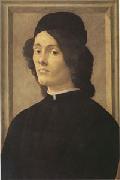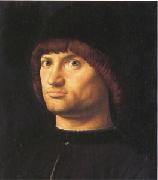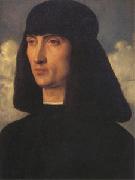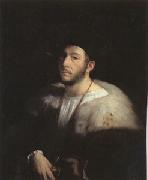
|
Sandro Botticelli
|
|||
|
|
|||
| Italian Early Renaissance Painter, 1445-1510 Italian painter and draughtsman. In his lifetime he was one of the most esteemed painters in Italy, enjoying the patronage of the leading families of Florence, in particular the Medici and their banking clients. He was summoned to take part in the decoration of the Sistine Chapel in Rome, was highly commended by diplomatic agents to Ludovico Sforza in Milan and Isabella d Este in Mantua and also received enthusiastic praise from the famous mathematician Luca Pacioli and the humanist poet Ugolino Verino. By the time of his death, however, Botticelli s reputation was already waning. He was overshadowed first by the advent of what Vasari called the maniera devota, a new style by Perugino, Francesco Francia and the young Raphael, whose new and humanly affective sentiment, infused atmospheric effects and sweet colourism took Italy by storm; he was then eclipsed with the establishment immediately afterwards of the High Renaissance style, which Vasari called the modern manner, in the paintings of Michelangelo and the mature works of Raphael in the Vatican. From that time his name virtually disappeared until the reassessment of his reputation that gathered momentum in the 1890s | |||
|
|
|||
|
Portrait of a Man (mk05) new5/Sandro Botticelli-383829.jpg Painting ID:: 20034 |
Wood 22 1/2 x 15 1/4''(57 x 39 cm)Entered the Louvre in 1882 | ||
|
|
|||
|
Antonello da Messina
|
|||
|
|
|||
| 1430-1479 Italian Antonello da Messina Galleries Antonello was born at Messina around 1429-1431, to Giovanni de Antonio Mazonus and Garita (Margherita). He was probably apprenticed in his native city and in Palermo. Around the year 1450, according to a 1524 letter of the Neapolitan humanist Pietro Summonte,[1] he was a pupil of the painter Niccol?? Colantonio at Naples, then one of the most active centres of Renaissance arts. Around 1455 he painted the so-called Sibiu Crucifixion, which was inspired by the Flemish Calvaries and is housed in the Muzeul de Art?? in Bucharest. Of the same years is the Crucifixion in the Royal Museum of Antwerp: his early works shows a marked Flemish influence, which it is now understood he derived from his master Colantonio and from works by Rogier van der Weyden and Jan van Eyck that belonged to Colantonio's patron, Alfonso V of Aragon; his biographer Vasari remarked that Antonello saw at Naples an oil painting by Jan Van Eyck (the "Lomellini Tryptych") belonging to King Alphonso of Aragon; Vasari's further narrative, that being struck by the new method, set out for The Netherlands to acquire a knowledge of the process from Van Eyck's disciples is discredited today. Another theory, supported only by vague documentary evidence, suggests that in 1456 Antonello visited Milan, where he might have met Van Eyck's most accomplished follower, Petrus Christus. Since Antonello was one of the first Italians to master Eyckian oil painting, and Christus was the first Netherlandish painter to learn Italian linear perspective, their meeting is a tempting answer to both questions. But in fact, neither artist is known for certain to have been in Milan at the time. The following year, Antonello received his first commission as an independent artist, a banner for the Confraternit?? di San Michele dei Gerbini in Reggio Calabria. At this date, he was already married, and his son Jacobello had been born. In 1460, his father is mentioned leasing a brigantine to bring back Antonello and his family from Amaltea, a town in Calabria. In that year, Antonello painted the so-called Salting Madonna, in which standard iconography and Flemish style are backed by a greater attention in the volumetric proportions of the figures, probably coming from his knowledge of some works by Piero della Francesca. Also from around 1460 are the two small panels depicting Abraham Served by the Angels and St. Jerome Penitent now in the Museo Nazionale della Magna Grecia in Reggio Calabria. In 1461 his younger brother Giordano entered Antonello's workshop, signing a three-years' contract. Of that year is a Madonna with Child for the Messinese nobleman Giovanni Mirulla, now lost. Between 1465-1470, Antonello finished a Portrait of a Man now at Cefal??. His portraits are noteworthy for his characteristic use of the three-quarter view, typical of the Flemish School, whereas almost all Italian painters adopted the medal profile pose. Antonello travelled to Venice around 1470, to see Giovanni Bellini's paintings. The Palermo Annunciation.In this year he executed his first signed and dated work, the Salvator Mundi. Back at Sicily, Antonello finished the St. Gregory's Polyptych. In 1474, he painted the Annunciation, now in Syracuse, and the St. Jerome in His Study, one of his most famous paintings. The following year he began his regular sojourn in Venice, where he remained until the fall of 1476. His works of this period begin to show a greater attention to the human figure, regarding both anatomy and expressivity, according to the influence of Piero della Francesca and Bellini. His most famous pictures dating from this period include the Condottiero (Louvre, illustration), the San Cassiano Altarpiece and the St. Sebastian (see selected works for details). The San Cassiano Altarpiece was especially influential on Venetian painters, as it was one of the first of the large compositions in the sacra conversazione format which was perfected by Giovanni Bellini (Antonello's surviving work in Vienna is only a fragment of the much larger original). Antonello returned briefly to Sicily in 1476, where he painted the famous Virgin Annunciate, now in the Palazzo Abatellis at Palermo. He died at Messina in 1479: his testament dates from February of that year, and he is documented as no longer alive two months later. Some of his last works remained unfinished, but were completed by his son Jacobello. | |||
|
|
|||
|
Portrait of a Man (mk05) new5/Antonello da Messina-478975.jpg Painting ID:: 20075 |
1475 Wood 14 1/4 x 12''(36 x 30 cm)Entered the Louvre in 1865 | ||
|
|
|||
|
Giovanni Bellini
|
|||
|
|
|||
| Italian High Renaissance Painter, ca.1430-1516 (b ?1431-6; d Venice, 29 Nov 1516). Painter and draughtsman, son of (1) Jacopo Bellini. Although the professional needs of his family background may have encouraged him to specialize at an early date in devotional painting, by the 1480s he had become a leading master in all types of painting practised in 15th-century Venice. Later, towards the end of his long life, he added the new genres of mythological painting and secular allegory to his repertory of subject-matter. His increasing dominance of Venetian art led to an enormous expansion of his workshop after c. 1490; and this provided the training-ground not only for his numerous shop-hands and imitators (generically known as Belliniani) but probably also for a number of major Venetian painters of the next generation. Throughout his career, Giovanni showed an extraordinary capacity for absorbing a wide range of artistic influences, both from within Venetian tradition and from outside. He also oversaw a technical revolution in the art of painting, involving the gradual abandonment of the traditional Italian use of egg tempera in favour of the technique of oil painting pioneered in the Netherlands. It was thanks to Giovanni Bellini that the Venetian school of painting was transformed during the later 15th century from one mainly of local significance to one with an international reputation. He thus set the stage for the triumphs of Venetian painting in the 16th century and for the central contribution that Venice was to make to the history of European art. | |||
|
|
|||
|
Portrait of a Man (mk05) new5/Giovanni Bellini-233584.jpg Painting ID:: 20076 |
Wood 13 x 10 1/4''(33 x 26 cm)Entered the Louvre in 1902 | ||
|
|
|||
|
FRANCIABIGIO
|
|||
|
|
|||
| Italian High Renaissance Painter, 1484-1525 Italian painter. The son of a Milanese linen-weaver, he had completed his apprenticeship, in Florence, by 18 October 1504. His earliest documented works, for example a Piete (1506) for S Pancrazio, Florence, have not survived. According to Vasari, Franciabigio trained with Mariotto Albertinelli, in whose last work, the signed and dated Crucifixion (1506; Florence, Certosa del Galluzzo, Pin.), he painted the angels (Shearman). In December 1508 the names of Franciabigio and Andrea del Sarto, who sometime between autumn 1506 and 1509 set up a joint workshop, were entered in the registration book of the Arte de' Medici e Speziali, to which painters were required to belong. The Portrait of a Young Man (Paris, Louvre) dates from this period. The work, which was later enlarged, shows the subject half-length, leaning pensively against a balustrade, with strong areas of shadow around the eyes. This is the first in a series of male portraits typical of Franciabigio: the subjects, each of whom wears a hat, are mostly placed in front of a landscape, with their gaze fixed meditatively or piercingly on the onlooker. The religious works from this period, such as the Virgin and Child (1509; Rome, Pal. Barberini), also show a movement away from the style of Albertinelli and Raffaellino del Garbo and begin to reveal instead the influence of Leonardo, Michelangelo and, especially, Raphael. Yet Franciabigio's connection with Andrea del Sarto was the determining factor in his career. When in 1509 it was del Sarto who received the commission to complete the fresco cycle in the atrium of SS Annunziata, Florence, their relationship altered significantly. | |||
|
|
|||
|
Portrait of a Man (mk05) new5/FRANCIABIGIO-545837.jpg Painting ID:: 20158 |
Wood,30 x 23 1/2''(76 x 60 cm).Acquired from the Duc de Richelieu by Louis XIV in 1665 | ||
|
|
|||
|
Giovanni di
|
|||
|
|
|||
| active 1310-1347 in Siena | |||
|
|
|||
|
Portrait of a Man (mk05) new5/Giovanni di-278878.jpg Painting ID:: 20224 |
Canvas,37 1/2 x 30 1/4''(95 x 77 cm)Early collection | ||
|
|
|||
|
Also Buy::. For Following Paintings / Artists / Products, Please Use Our Search Online: |












